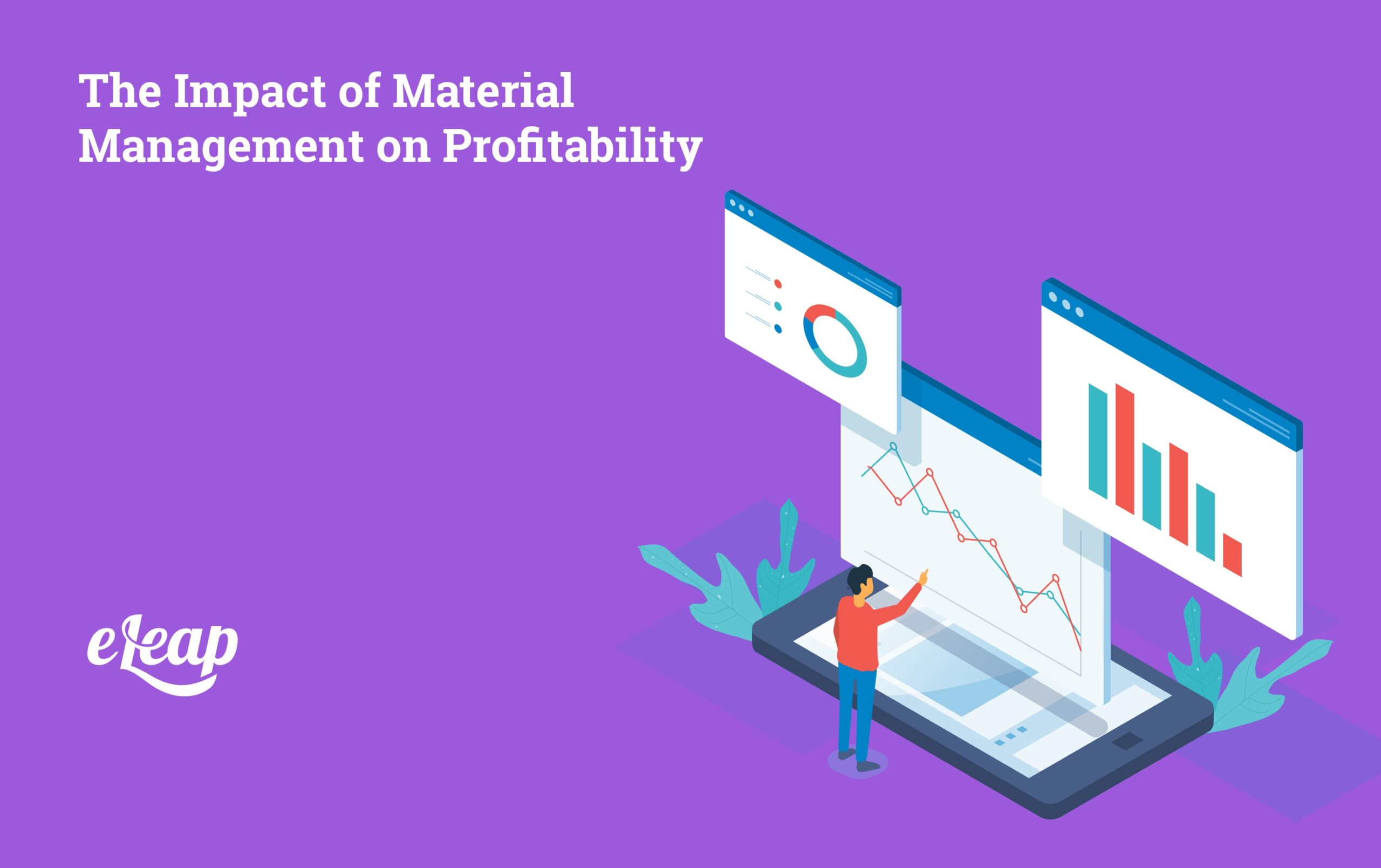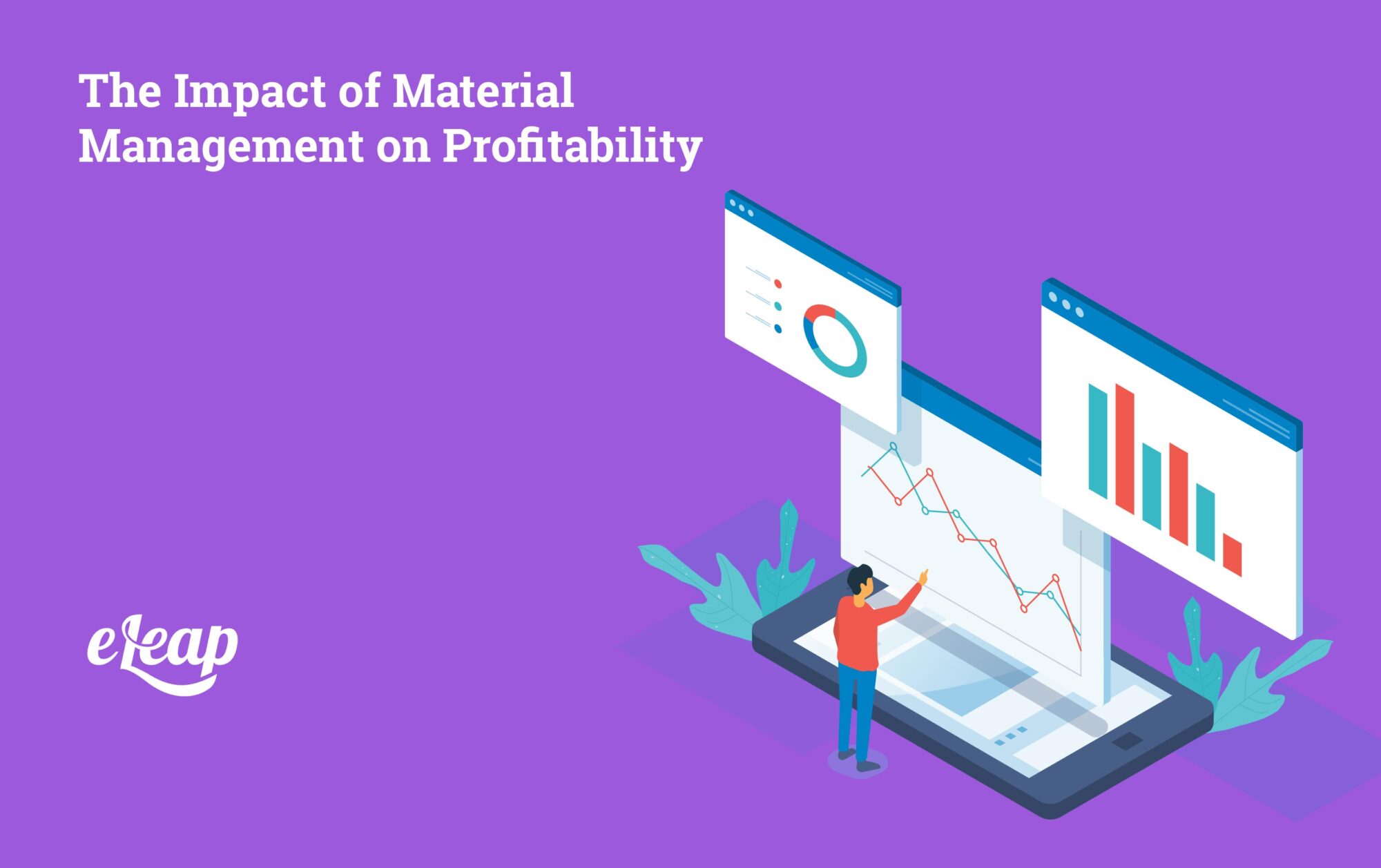The Impact of Material Management on Profitability

Material management plays a pivotal role in the success of any business. Ensuring the efficient flow of materials, from procurement to consumption, directly influences a company’s bottom line. Businesses, especially manufacturing, retail, and logistics, rely heavily on material management practices to control costs, optimize inventory, and enhance profitability. Explore how eLeaP®’s Performance Management Platform can simplify evaluations, boost productivity, and drive measurable results.
This article will explore the intricate relationship between material management and profitability, providing insights into how businesses can leverage effective material management strategies to maximize their financial performance.
What is Material Management?
Material management involves planning, organizing, and controlling the materials and resources required in production or business operations. It includes sourcing, purchasing, storing, and handling raw materials, components, and finished goods. Efficient material management is key to ensuring that businesses have the right materials in the right quantities at the right time without overstocking or running short.
Material management is essential for federal management, producing goods or services. It ensures that operations run smoothly and are cost-effective. This process spans the entire supply chain, from procurement to delivery to the end customer. By efficiently managing materials, companies can avoid disruptions and improve operational efficiency, leading to better financial outcomes.
Why Material Management Matters for Profitability
Effective material management directly impacts a company’s profitability. In simple terms, the better a company manages its materials, the more efficiently it operates, leading to cost savings and higher profits.
The cost of materials often represents a significant portion of a business’s total operating expenses. However, companies can significantly lower these costs by minimizing waste and reducing excess. Efficient material management also enables enterprises to meet customer demand without overcommitting resources, which can improve sales and customer satisfaction.
Moreover, material management helps streamline production and avoid stockouts, preventing delays leading to lost sales and missed opportunities. By maintaining an optimal inventory level, companies can always be ready to fulfill orders while keeping costs low.
The Direct Impact of Material Management on Profitability
Minimizing Operational Costs
One primary way material management influences profitability is by reducing operational costs. Effectively overseeing the procurement and handling of materials ensures businesses don’t spend unnecessarily on surplus stock or inefficient processes.
A significant challenge many businesses face is excess inventory. High inventory levels can lead to increased storage costs, handling fees, and the risk of obsolete or expired goods. Material management strategies such as just-in-time (JIT) inventory systems and lean principles help businesses avoid overstocking by aligning material deliveries closely with production needs. This stage reduces unnecessary capital expenditure and frees up resources for other strategic initiatives.
By maintaining optimal stock levels, companies can reduce waste and prevent loss due to damage or obsolescence. Inventory management tools and systems can track material usage and alert managers when it is time to reorder or adjust production schedules. This ensures that excess inventory is kept to a minimum.
Improving Inventory Turnover and Reducing Stockouts

Inventory turnover is a key indicator of how efficiently a company manages its materials. Higher turnover means that a company can sell its products more quickly, which improves cash flow and reduces the holding costs associated with unsold goods.
Good material management ensures that businesses do not face stockouts, which can disrupt production and lead to missed sales opportunities. A well-managed supply chain enables companies to maintain an adequate supply of materials to meet demand without excess. By optimizing inventory levels, businesses can keep their operations running smoothly, ensuring that products are available when needed, thus increasing sales and improving customer satisfaction.
Through improved material management, companies can implement demand forecasting techniques that ensure products are available in the right quantities at the right time. This proactive approach eliminates stockouts, allows businesses to keep customers happy, and prevents the waste associated with overproduction.
Enhancing Cash Flow Through Strategic Material Management
Effective material management also plays a critical role in enhancing a company’s cash flow. By managing material costs and inventory efficiently, businesses can reduce the capital in inventory, allowing them to use these funds for other operational needs.
The key to improving cash flow is balancing optimal inventory levels with reduced capital expenditures on raw materials and goods. By utilizing advanced forecasting and inventory management systems, businesses can more accurately predict future material needs and ensure they purchase only the required materials.
This strategic approach helps avoid cash flow problems caused by overstocking, which ties up capital that could be better used for other business operations or investments. By clearly understanding material requirements and timelines, businesses can improve their liquidity and allocate resources to growth opportunities.
Key Strategies for Effective Material Management
Lean Inventory and Just-in-Time (JIT) Systems
Implementing lean inventory practices is one of the most effective strategies for material management. By eliminating excess stock, lean inventory management aims to reduce waste and optimize inventory levels.
The JIT system, often integrated with lean inventory practices, ensures that materials arrive only when they are needed in the production process. This process reduces storage costs and the risk of materials becoming obsolete. By eliminating unnecessary inventory and ensuring that materials are available when needed, companies can significantly improve profitability by lowering operational costs.
Adopting a lean approach requires close coordination between suppliers, production schedules, and demand forecasting to ensure materials arrive on time. Businesses that successfully implement JIT systems can improve their cash flow and reduce storage and handling expenses, making them more profitable in the long run.
Advanced Technology and Automation in Material Management
The role of technology in material management has grown significantly in recent years. With advancements in software systems such as Enterprise Resource Planning (ERP) solutions, businesses can streamline the material procurement process, tracking, and utilization.
ERP systems integrate various business functions, from inventory management to supply chain coordination, into a single platform. This stage provides real-time visibility into material availability, demand, and usage, allowing businesses to make data-driven decisions about procurement and production.
Automation tools, including Artificial Intelligence (AI) and Internet of Things (IoT) devices, further enhance material management by autonomously monitoring and managing inventory levels. With AI-driven demand forecasting and predictive analytics, businesses can adjust real-time inventory levels to avoid overstocking and stockouts, improving profitability.
Data-Driven Forecasting and Demand Planning
Effective material management depends on the ability to predict material needs accurately. Data-driven forecasting tools help businesses forecast future material requirements based on past consumption patterns, seasonal trends, and market conditions.
By analyzing historical data and current market trends, businesses can develop demand planning models that align material purchases with actual needs. This process ensures that companies do not overcommit to inventory or understock, which can lead to financial strain.
Additionally, businesses can use demand forecasting to plan for unexpected fluctuations in material needs, such as supply chain disruptions or seasonal demand spikes. This proactive approach to material management helps businesses maintain profitability by reducing the risks associated with material shortages or overstocking.
Overcoming Common Challenges in Material Management
Dealing with Inventory Overstock and Understock
Many businesses struggle to balance too much and too little inventory. Overstocking can result in unnecessary storage costs and potential waste, while understocking leads to production delays and missed sales opportunities.
Material management strategies, such as JIT, lean practices, and automated inventory systems, can help businesses find the right balance. By leveraging advanced tools and methodologies, companies can maintain optimal inventory levels that support efficient operations and maximize profitability.
Addressing Supply Chain Disruptions
Supply chain disruptions are inevitable, but businesses can take steps to mitigate their impact on material availability. Whether caused by global events, supplier delays, or transportation issues, these disruptions can cause production delays, missed deadlines, and lost revenue.
To address these challenges, companies can develop contingency plans that include alternative suppliers, inventory buffers, and flexible production schedules. By diversifying their supply chain and maintaining strong relationships with multiple suppliers, businesses can reduce the risk of disruptions and ensure the continued flow of materials.
Bridging Communication Gaps Between Departments
Effective communication between departments is essential for successful material management. To avoid costly mistakes or inefficiencies, sales, procurement, production, and logistics teams must be aligned on material needs, schedules, and inventory levels.
By using integrated software systems such as ERP tools, businesses can ensure that all teams can access the same real-time data, allowing for better coordination and decision-making. This communication ensures that material management aligns with broader business goals and reduces the risk of errors that can impact profitability.
The Role of Software and Tools in Optimizing Material Management
ERP Solutions for Seamless Material Management
An ERP system is one of the most potent tools for material management. These integrated solutions help businesses manage everything from procurement and inventory tracking to supply chain coordination and production scheduling.
An ERP system allows businesses to automate routine tasks, reduce human error, and gain real-time insights into their material flows. This stage leads to better decision-making, more accurate forecasting, and a streamlined supply chain that improves profitability.
Software platforms like eLeaP can also integrate employee training modules, ensuring all stakeholders are well-versed in the systems and processes that drive efficient material management.
Inventory Management Tools: Streamlining Stock Levels and Order Processing
Inventory management tools are essential for tracking and optimizing stock levels. These systems provide real-time data on inventory status, helping businesses make informed decisions about ordering, restocking, and production scheduling.
By utilizing inventory management software, businesses can automate order processes, prevent stockouts, and minimize excess inventory. This process improves profitability by reducing carrying costs and avoiding waste.
The Future of AI and Automation in Material Management
The future of material management lies in automation and artificial intelligence. AI-powered systems can predict material needs with unprecedented accuracy, and automation tools can manage inventory without human intervention.
Incorporating these technologies into material management processes will reduce costs and enhance operational efficiency, leading to significant profitability gains for businesses in various industries.
Conclusion: The Future of Material Management and Profitability
Material management is crucial to driving profitability. Effective material management strategies, such as lean practices, advanced forecasting, and automation, can help businesses optimize inventory, reduce costs, and improve operational efficiency.
As technology advances, businesses must stay ahead of trends such as AI, ERP systems, and automation to maintain a competitive edge. With the right material management practices, companies can unlock new opportunities for profitability and long-term success.
By prioritizing efficient material management, businesses can meet customer demand and maximize their financial performance. Whether using software tools like eLeaP to streamline processes or implementing lean inventory strategies, the impact of material management on profitability cannot be overstated.